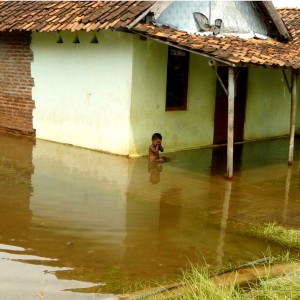Policy Options in Reducing Vulnerability caused by Climate Change
Local capacity to response the changing climate is not equal across country. Physical and environmental capacity across and within regions are vary so do their social and economic capacity. A significant factor which influence to the variability of cities’ capacity in responding to climate change also lays on governance and institutional capacity. It includes the awareness of local government as well as other stakeholders and the availability of climate information in which vulnerability mapping are critical. The gap between capacity to response and impact of climate changes is more serious in developing countries as the issue of climate change is quite new for their local government and stakeholders. Currently, actions in coping climate change is done by many parties from the community themselves, local government/institutions, national level institutions and international level institutions. A lot of programs especially have been done when the destruction occurred is quite big and many losses incurred. But, there is no coordination among parties in doing programs. Sometime programs done are overlapping each other and even opposite each other. Many programs
It necessary to shift policy attention away from reactive short term safety policies toward a risk reducing strategy which is more effective and efficient. Policies that can reduce people expenditure caused by climate change and support more secure and more lucrative livelihoods. The policy paper attempts to answer what policies are needed to maximize programs to reduce the community vulnerability caused by climate change
silahkan diunduh Policy Options in Reducing Vulnerability caused by Climate Change
